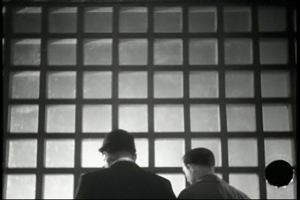
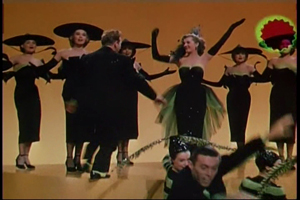
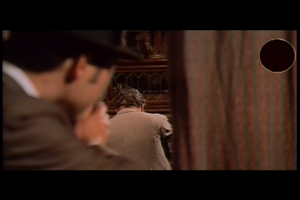
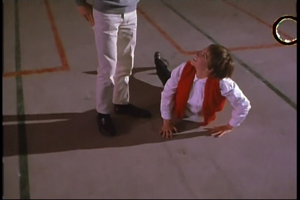
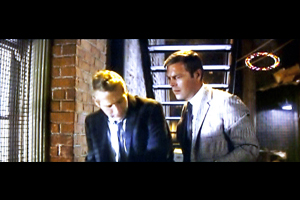
CUE MARKS - CIGARETTE BURNS
Cue Marks or 'cigarette burns' are the artifact that signals to the projectionist that a film reel change is imminent; it enters furtively yet instantaneously and mostly at the top right of the frame.
The Cue Mark comes from film history, the machinery of cinema, the physical weight of the reel. It's a legacy, a relic. Today, films are digitized and transmitted on a cable. The Cue Mark has no longer reason to exist, but still is present, escaping the notice of the everyday viewer. Two episodes of 'Columbo' bring this mechanism vividly alive.
In 2012, we began working on a typology of the Cue Marks. We used this repertory to create new paintings, video installations and works in neon.
2.jpg)
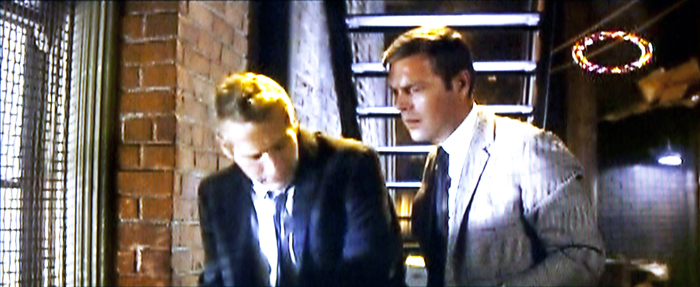
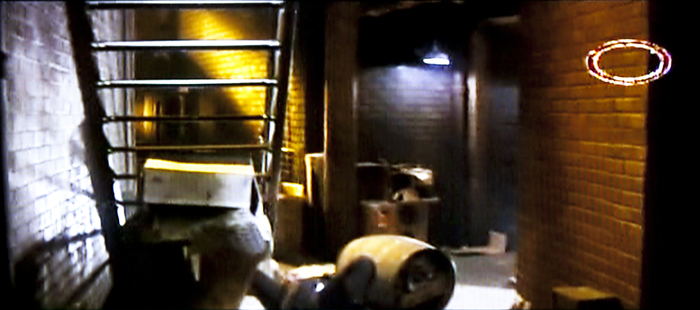
HARPER 1966 - DIRECTOR JACK SMITH
Change of reel
The periodicity is approximately 20 minutes, which means four to six changes of reel per film.
Synchronization of two projectors
A set of 8 cue marks ou cue dots (exceptionally 10) signals a change of reel:
- The first four cue marks (motor cue) onto four frames, at eight seconds of the last image, bring to the projectionist's attention he has to start the motor of the second projector.
- The last four cue marks (changeover cue), at one second of the last image, signal the projectionist he has to launch a new reel.
The form of the Cue marks evolved
In the 1930s, they were black circles surrounded by a white border; then in the 40s and 50s, colored stars. Beginning in the 1960s, with Cinemascope, the Cue Marks followed the elongation of the format to become an oval. Sometimes rougher Cue Marks were superimposed as projectionist's marks, creating a tension in the image field. Sometimes the film get melted, creating improbable multicolored runs.





CUE MARKS - CIGARETTE BURNS
Dans cette série, nous nous intéressons aux brûlures de cigarette, ces marques qui, dans les films apparaissent furtivement, le plus souvent en haut à droite de l'écran, afin de signaler au projectionniste l'imminence d'un changement de bobine.
Ce dispositif appartient à l'histoire du film, de la copie, à la machine du cinéma, au poids physique des images.
Aujourd'hui ces films sont numérisés et transmis par le câble. Ces marques qui n'ont plus de raison d'être sont toujours présentes, échappant à l'attention générale.
Visionnant de nombreux films sur la chaîne américaine TCM, nous avons constitué une collection, puis établi une chrono-typologie de ces brûlures, afin de réaliser des installations vidéo, des néons et des peintures.
Le plus souvent les œuvres ont pour titre celui du film auquel elles se réfèrent.
2.jpg)


HARPER 1966 - DIRECTOR JACK SMITH
Changement de bobine
La périodicité est le plus souvent d'envirion 20 minutes, soit quatre à six changement de bobine par film.
Principe de synchronisatiion de deux projecteurs
Huit repères (exceptionnement neuf ou dix), marquent la fin d'une bobine :
- Quatre premiers repères sur quatre photogrammes successifs à huit secondes de la dernière image.
Ces quatre repères (motor cue) servent de signal au projectionniste qui devra lancer le moteur du second projecteur sur lequel la bobine suivante est déjà installée.
- Quatre autres repères sur quatre photogrammes à une seconde de la dernière image de la bobine.
Ces marques (changeover cue) donne le signal du lancement du second projecteur.
Dans le cas du cinémascope, le repère rond en haut à droite sur la pellicule apparaît ovale à l'écran.